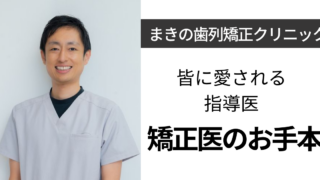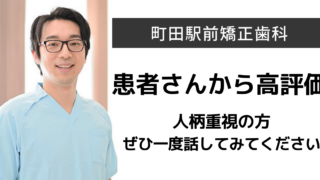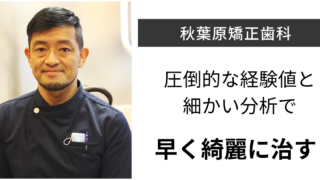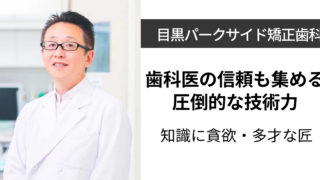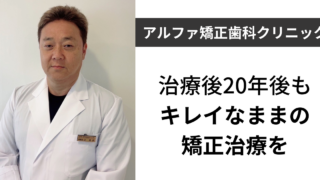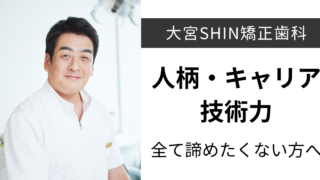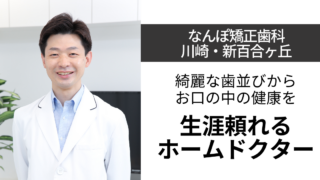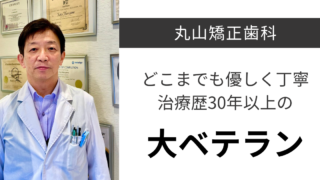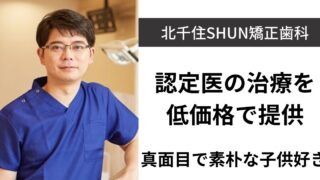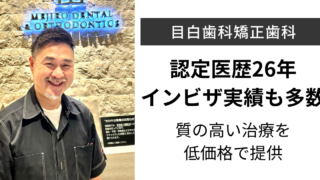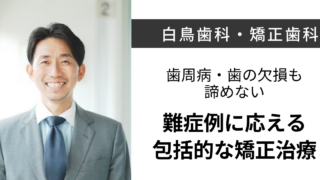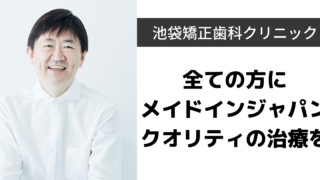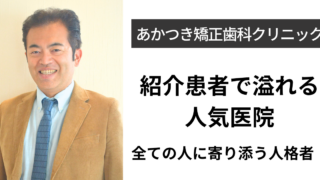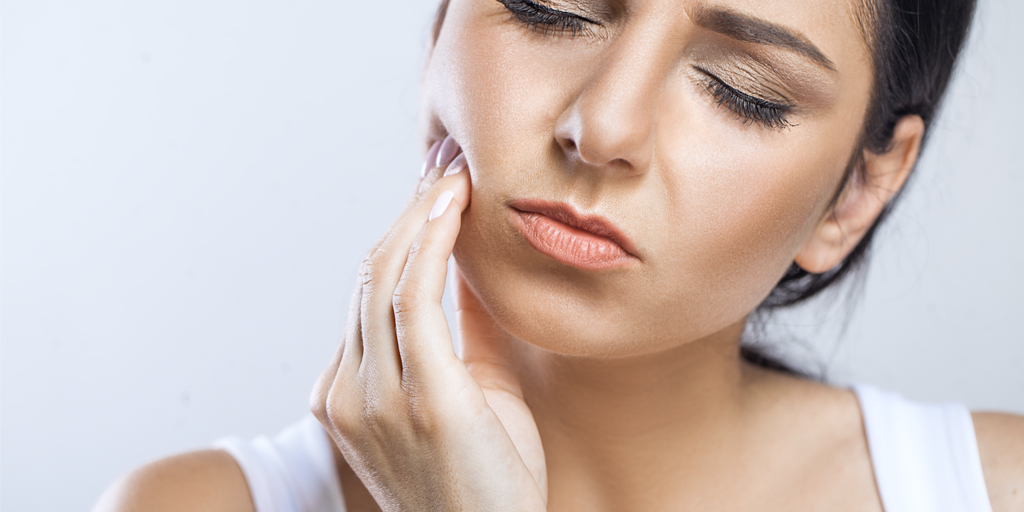
矯正治療の痛みはなぜ起こるのか?痛みを和らげる方法もご紹介!
歯並びや噛み合わせに悩んでいる人が気になる治療といえば、歯科矯正。
しかしみなさん心配されるのは、その治療に伴う”痛み“ではないでしょうか?
痛みに関しては治療を始める年齢、状況、治療方法、そして期間を含め理由は様々ですが、
一般的に言われる痛みについて
1.矯正中の痛みの原因
2.痛みの期間やピークはいつなのか
3.痛みへの対処法
以上3つの観点から解説いたします。
矯正中の痛みの原因
矯正治療中は、その時々において痛みを伴うことがあります。
しかし、ただ痛みを恐れるのではなく、どんな時に痛みを感じるのか、その原因を予め知っておくことで、痛みに向き合うことができますし、冷静な対応もできるでしょう。
特に小さなお子様の治療に伴走する親御さんにとっても、慌てる必要がなくなります。
この記事では、どんな時に痛みを感じるのか、つまり痛みの原因は何なのかをお伝えします。
痛みの原因は大きく分けて3つの状況が考えられます。
矯正中の痛みの原因 ①矯正器具の影響
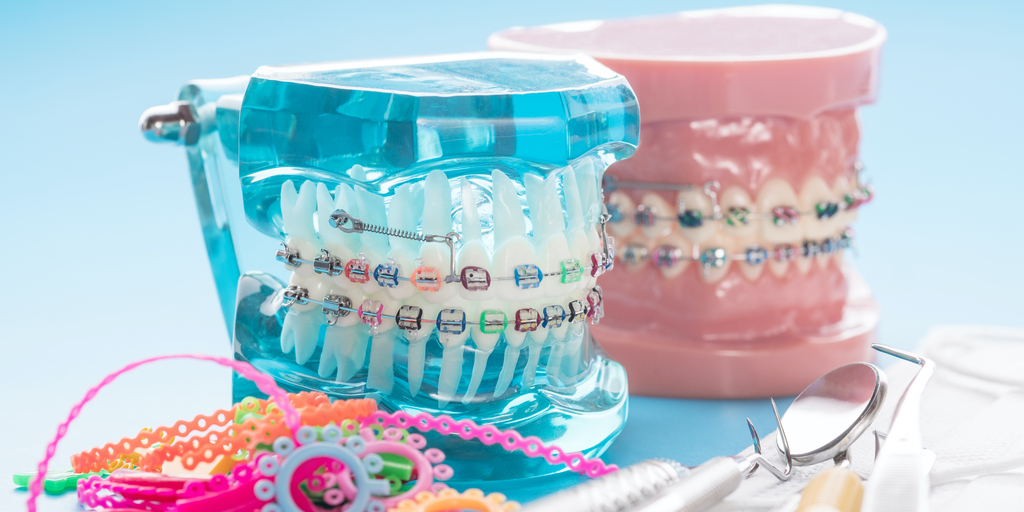
矯正器具、いわゆるブラケットとワイヤーによるものです。
口の中に器具が入るため、どうしても口内や舌に接触します。
それによって、頬の内側辺りの器具が当たる部分がすれたり、口内炎ができてしまうこともあるでしょう。
ワイヤーを変えた後は唇やほっぺたに刺さって痛いこともあります。
また子供の場合、ヘッドギアという装置を使うこともありますが、その際歯の両端辺りにワイヤーを引っかけるのですが、特に子供には頭の圧迫感とワイヤーの不快さで痛みに感じることもあります。
矯正中の痛みの原因 ②歯が動く影響
矯正装置が持続的に歯に負荷をかけることで、歯は移動します。
歯が動いていく過程で、骨が吸収される際にプロスタグランジンE2という物質が分泌されます。これが直接の痛みの原因になります。
つまり、ワイヤーで締めた後、歯が動くことに伴い痛みが生じるというわけです。
また、歯が動き嚙み合わせがずれることで、頬の内側を噛んでしまうこともあります。
このような痛みが生じるのには個人差があります。
矯正中の痛みの原因 ③噛む(食べるなど)影響
ワイヤーを交換したり、マウスピース交換後は痛みを感じることがあります。
歯のまわりの組織を壊して歯を動かすため、歯と歯をかみ合わせる際に、力が入りにくくなることや、痛みで口を開くのも困難になることがあります。
矯正中の痛みの期間やピークと緩和方法
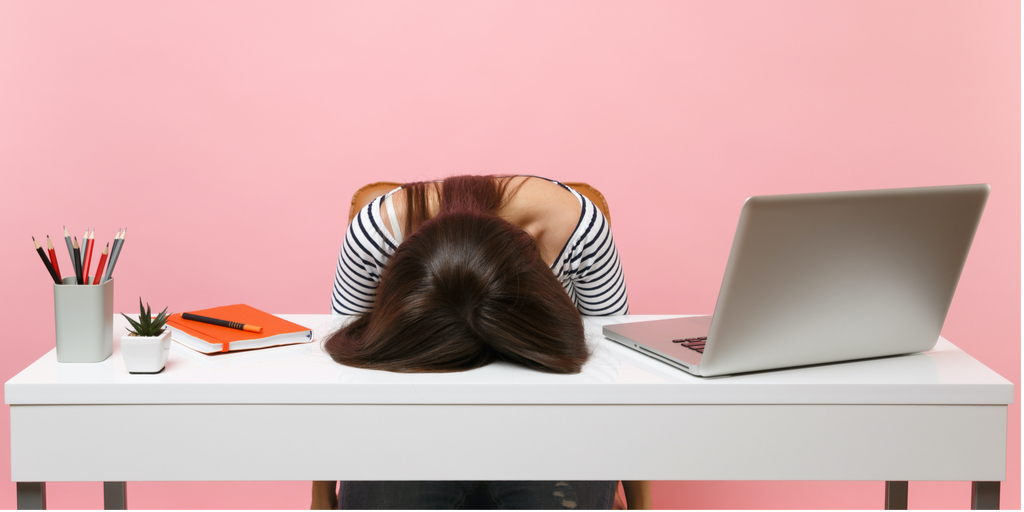
痛みを感じ始めると、不快でイライラするということもあるかもしれません。
痛みに意識が集中しがちになって、必要以上に不安も募っていくことも。
しかし、その痛みがどの程度続くのか予測できれば、気持ちも楽になり、前向きに矯正治療を進めていくことができます。
以下に、①~③のパターン合わせて、痛みの期間とピークを解説いたします。
矯正中の痛みの期間やピーク ①矯正装置による痛みの場合
もともと矯正装置はお口のなかになかったものですから、装置に慣れないうちは違和感があるのは当然です。
痛みとして感じ始めるのは装着してから約3~6時間経過した頃からというのが一般的です。この痛みは数日から1週間程続くことが多いです。
唇の内側に装置が当たり、口内炎ができることもあります。
ブラケットの違和感や痛みは数日で徐々に慣れてくることが多いです。
矯正中の痛みの期間やピーク ②歯が動くことによる痛み
矯正装置によって歯に力が加わることで歯が動いていきます。それによるみは、
①と同様、装着後3~6時間後程から感じはじめます。
そして、3日目頃が一番の痛みのピークと言われ、1週間もすれば落ち着いてくるという方が多いです。
矯正中の痛みの期間やピーク ③モノを噛むことによる痛み
調整直後は歯と歯を噛み合わせるときに力を入れにくくなります。
そのため、普段の食事をすることが困難になるかもしれません。
しっかりと噛む必要のある硬いモノなどを噛もうとすると、痛みが増すことも多いので、気をつけたいものです。
痛みは2~3日から1週間ほどで治まります。
矯正中の痛みを和らげる方法
矯正治療の過程においては何らかの違和感や不快感、そして痛みが伴うことがあることをお伝えしてきました。
痛みの感じ方は、治療の程度や段階において、人それぞれです。
痛みを強く感じ、眠れなくて悩む人もいます。しかし、その痛みや不快感は必然なので仕方無い。我慢するしかない。
そのように捉えて治療に対するストレスになってしまうことも。
そうならないためにも矯正中の痛みを和らげる方法についてご紹介します。
①矯正装置による痛みの対処法
ワイヤーやブラケットの痛みならば、矯正用のワックス(植物性)が効果的です。
矯正装置が直接口内の粘膜に当たらないように、装置器具をカバーするねんどのようなものです。
カバーすることによって口内炎を防ぐことができます。
また、すでに口内炎が出きていても、寝る前などにワックスで当たる部分にカバーして、口内炎の薬等(医師処方のものがおすすめです)を塗れば治りが早くなります。
奥歯の一番奥のワイヤーがほっぺたに刺さっていたい場合は少し短く切ってもらうと良くなることが多いので、歯科医院に連絡して急患対応してもらいましょう。
ブラケット・ワイヤーの矯正装置以外にも、マウスピース型矯正装置もあります。
マウスピース矯正は歯への力のかけ具合が抑えられます。痛みが心配な方はマウスピース矯正を選ぶのも良いでしょう。
②歯が動くことによる痛みの対処法
痛みがそこまで酷くない場合はアセトアミノフェン(カロナール)がおすすめです。
それでも収まらない場合はロキソニンやボルタレンなどの鎮痛薬を飲みましょう。NSAIDSと呼ばれるこれらの薬は良く効きますが抗炎症作用が強く、歯の動きも抑制してしまいます。
ただ、痛みが強くて我慢できないのは日常生活に支障を来しますので何度か頓服で飲むくらいは問題ないでしょう。
③噛むときの痛みの対処法
調整後の痛みがある場合は、固いものは避けて食事をしましょう。
指で押すだけでも痛みを感じるため、なるべく刺激せず、歯と歯があたらないようにしましょう。
できるだけ柔らかいもの(お粥、スープ、うどん、煮物など)を食べるようにすると、負担が減り、痛みもおさえられます。
最後に
矯正治療を始める年齢や治療内容や期間はさまざまです。
そして治療中は、不快感や痛みがともなうこともあります。
しかし、治療中の悩みや痛みをそのまま我慢するのは、治療へ対するストレスにも繋がります。
何か不安に思う事や、不快さや痛みで悩んだ時にはまずは担当の歯科医師に相談しましょう。
きれいな歯並び、明るい笑顔を目指すために。少しでも快適に矯正治療を続けることが、成功へのカギです。
365dentist総監修 歯科医師/ゆきこ
長崎大学歯学部卒業
〜2018 九州医療センター、2018〜現在 都内歯科クリニック勤務
監修 歯科医師/Naomi
臨床研修終後、都内審美歯科勤務。現在は非常勤歯科医師/歯科ライター
日本歯科審美学会会員/インビザドクター

